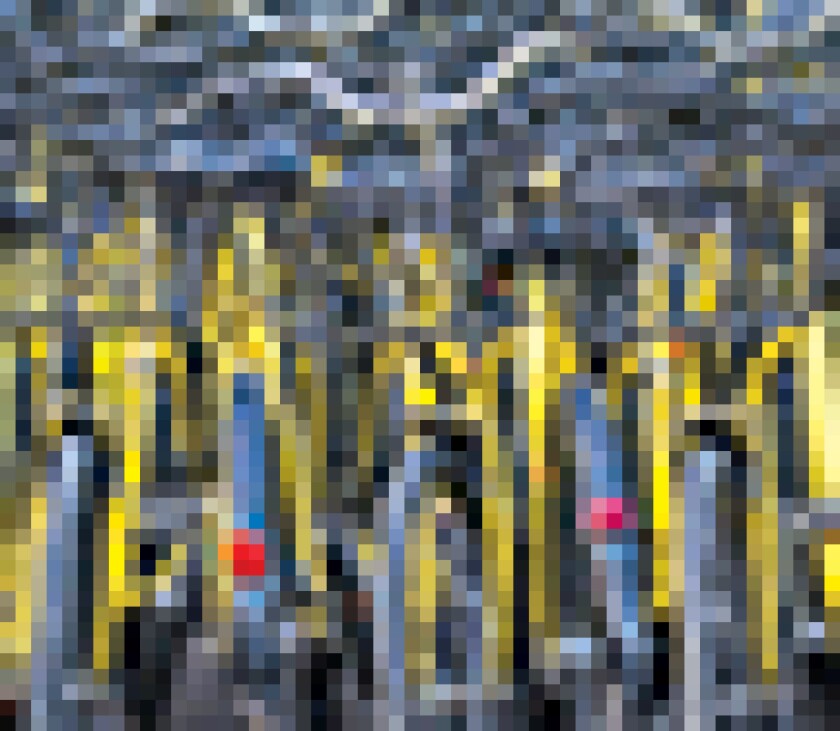
A patent owner who wants to enforce his patent in China should pay attention to the principle of allocating the burden of proof, which is one of the most important factors affecting whether it is possible to succeed in patent infringement litigation.
The basic principle adopted for allocating the burden of proof in patent infringement litigation is that the burden of proof is borne by the claimant. The Law of Civil Procedure, Article 64, Paragraph 1 states: "the parties have the responsibility to provide evidence for their claims". This means that, in patent infringement litigation, the patentee bears the burden of proof. The standard of the principle is high probability, which means that the fact can be determined by the Court if the evidence provided by one party can prove that the fact involved has happened with high probability.
However, it doesn't require a perfect evidence chain to be provided by the patentee, as long as there is a high possibility that enables the judge to affirm the fact asserted by the patentee based on the existing evidence and in connection with life experience and transaction practice. When there is no evidence or the evidence is not strong enough to support the patentee's allegation, the patentee risks losing the lawsuit. Several Provisions of the Supreme People's Court on Evidence in Civil Procedures, Article 2, Paragraph 2 states: "where any party cannot produce evidence or the evidence produced cannot support the facts on which the allegations are based, the party concerned that bears the burden of proof shall undertake unfavourable consequences."
The only statutory exception to the basic principle mentioned above is the provision for reversal of the burden of proof. But the provision only applies for patent infringement cases relating to a manufacturing method of a new product. In these cases the accused infringer should bear the burden of proof to prove the method he used is different from the patented method. Accordingly, applying the provision for reversal of the burden of proof requires two preconditions – the patent should be a method patent and the product manufactured by the patented method should be new. The provision for reversal of the burden of proof cannot apply for other types of method patents, such as application method or processing method.
In practice, unfortunately, patent owners find it difficult to collect evidence in many different kinds of infringement lawsuits, and applying the principle that the burden of proof is borne by the claimant means that the rights of the patent owners cannot be protected effectively. In recent years, with the increase in IP protection in China, the Court has been assigning the burden of proof reasonably to parties based on the actual situations during infringement lawsuits, which alleviates the burden of the patentee to some extent and can be referenced by the patentee.
Based on some recent cases from the Court, it is possible to see how the burden of proof is allocated in Chinese patent infringement litigation.
Large scale equipment
When enforcing a product patent, generally, the patentee can collect evidence by buying the infringing product in the market. But for large scale equipment, there are several problems when collecting evidence. First, due to the high price of the equipment, purchasing the infringing product brings severe economic pressure to the patentee. Second, some of the equipment is custom made, so it is hard to purchase it in the market through regular channels. Third, the equipment is usually controlled directly by the accused infringer, so the patentee finds it difficult to obtain. Accordingly, patent owners for these products find it difficult to collect evidence of infringement with regular measures, which makes it hard for them to enforce their own rights.
In Lupke v Zhongyun Co, et al (Civil Ruling (2012) Min Shen Zi no 39 by the Supreme People's Court on December 18 2012), the alleged product was a part of some large-scale equipment and could not be obtained without disassembling the equipment, so it was difficult for the patent owner Lupke to obtain the alleged product in the market through regular channels. Because the infringers Zhongyun refused to provide the equipment drawings and refused the request to disassemble the equipment, the patent owner failed to provide sufficient evidence to support his allegation after he had tried many ways to prove infringement. The first instance and the second instance courts both supported the allegation of the patentee based on the existing evidence according to the provision of the Regulations on Civil Action Evidence issued by Supreme People's Court, Article 75: "Where a party makes statements for its allegations but fails to provide other relevant evidence, the allegations thereof shall not be affirmed, unless the other party so affirms."
During the retrial, the Supreme Court held that:
|
|
"In practice, unfortunately, patent owners find it difficult to collect evidence in many different kinds of infringement lawsuits" |
|
|
The equipment in this case is of a high price and large size, and is actually controlled by the infringers, so there are lots of actual difficulties for the patentee to collect evidence. The patentee could be believed to fulfil his responsibility if the ways he had adopted almost covered all the legitimate ways of evidence collection. The infringers should undertake the unfavourable consequences in the case that the patentee already provided as much evidence as he could and the evidence could preliminarily prove that the fact of infringement is established; the infringers refused to provide the drawings of the alleged equipment and refused to cooperate on the identification without any justified reasons which meant the identification couldn't be done; and the infringers did not provide evidence to prove that the technical solution of the alleged equipment is different from the patent and doesn't fall into the protection scope of the patent. So according to Regulations on Civil Action Evidence issued by Supreme Court, Article 75, it can be inferred that Lupke's allegation is tenable.
The Supreme Court also rejected the retrial request of the infringers.
Manufacturing methods
In infringement actions relating to a manufacturing method, it is difficult for plaintiff to learn the details of the manufacturing method adopted by the infringer, because the manufacturing method is generally kept within the corporation of the infringer. Similarly, for most of the manufacturing methods for an existing product, it is difficult for the patentee to collect evidence of infringement.
In view of the practical difficulties, Opinions on Exerting the Function of Intellectual Property Rights Judgment to Facilitate Socialist Cultural Development and Prosperity and Promote Independent and Coordinated Economic Development, which were drafted by the Supreme People's Court (no18 (2011)) state that: "In the situation that the product manufactured by the patented method is not new, the patentee can prove that the infringer manufactures the same product, but cannot prove with reasonable efforts that the infringer uses the patented method, according to the specific conditions and combining with the existing facts and daily experiences, if it can be determined that it is highly possible the alleged product is manufactured by the patented method, the patentee shall no longer be asked for further evidence, but the infringer shall submit the evidence to prove that its manufacturing method is different from the patented method in accordance with the relevant regulations of judicial interpretation on civil litigation evidence."
|
|
"It is difficult for the patentee to determine if the alleged product falls into the protection scope of the patent before filing a lawsuit" |
|
|
In Yibin Changyi Pulp Co, Ltd v Weifang Henglian Paper Pulp Co, Ltd (the civil ruling paper of Min Shen Zi no 309 (2013) by the Supreme People's Court), the dispute focused on how to allocate the burden of proof for parties in a case that involved a manufacturing method patent for a non-new product. The plaintiff, Changyi, provided preliminary evidence to prove that the alleged method and the product manufactured by the alleged method are the same as the patented method and the product manufactured by the patented method. The first instance court assigned the burden of proof to the defendant, Henglian, in consideration of the above evidence. But the defendant refused to prove that the alleged method was different from the patented method, so the first instance court decided that the alleged method fell into the protection scope of the patent. The second instance court rejected the appeal of Henglian based on the same reason. During the retrial, the Supreme Court held that:
Generally, the specific process steps or the data about the manufacturing method can be learned only at the manufacturing site or by checking the production record. In the situation that the evidence of the manufacturing method of a product is fully controlled by the infringer, it is difficult for the patentee to access the manufacturing site and production record to get the complete evidence of the manufacturing method. In this case, Changyi has tried its best to prove the manufacturing method fell into the protection scope of the patent using various methods. Meanwhile, Henglian didn't cooperate with the court for the evidence preservation on the manufacturing method it controlled, which had the result that the court could not obtain the evidence of the alleged method. Based on the above evidence and daily experience, it can be inferred that there is a high possibility that Henglian infringed. If Henglian doesn't provide sufficient evidence to prove the manufacturing method it used is different from the patented method, Henglian should bear the consequences."
The Supreme Court eventually rejected the request for a retrial.
Features of infringing products
Product claims are generally defined by structural features, but in some special cases, they can be defined by functional features, effect features, method features, physical and chemical features or usage state features. When comparing these non-structural features of the infringing product with those of the patent, these features can't be reflected in the structure of the product, so it is difficult for the patentee to determine if the alleged product falls into the protection scope of the patent before filing a lawsuit.
In Staubli Faverges Co, Ltd v Changshu Textile Machinery Co, Ltd (the civil ruling paper of Su Zhi Min Zhong Zi no 0290 (2012) by the Jiangsu Province Supreme People's Court), the patent related to a rotating dobby. The claim of the patent includes a feature defining the working state of the actuator, which is "when said levers are engaged with said wedging surfaces, one of said lever is out of range of an actuator belong to said reading device". During the first instance, the court confirmed the alleged product had the same function as the function to be achieved by the patent and its structure was the same as the structure of the patent according to the demonstration and analysis. Therefore, it could be inferred that the alleged product had the above feature in actual operation. The first instance court held that the alleged product fell into the protection scope of the patent. After the defendant Changshu Textile Machinery appealed against the decision, the second instance court rejected the appeal under the same reason.
These cases make it clear that courts will assign the burden of proof reasonably between the patentee and the infringer based on specific circumstances. But the patentee should try to take initial responsibility for the burden of proof so as to make it possible for the court to then shift it to the infringer. If patentees are not able to get the alleged product or access the alleged method, they should try their best to take various measures to enable the court to believe there is a high possibility of infringement.
Bing Wu |
||

|
|
Bing Wu is experienced in patent examination, reexamination, invalidation and litigation. From 2004 to 2007, Wu was an examiner in the mechanical department of the State Intellectual Property Office (SIPO), where he was responsible for examining mechanical patent applications, especially in machinery and hydraulic control. From 2008 to 2011, he worked as a re-examiner in the Patent Reexamination Board (PRB) of SIPO. He was responsible for re-exam and invalidation requests in the field of mechanical technology and design. In 2012, Wu was appointed to the Intellectual Property Division of the Supreme People’s Court to handle IP related cases. Since Wu joined Beijing East IP in 2013, he has been responsible for invalidations and litigations in the field of mechanical and design. Wu is also the co-author of two books concerning examination standard of design invalidation. He has published many articles related to patent examination, protection and enforcement of Chinese patent rights. |










